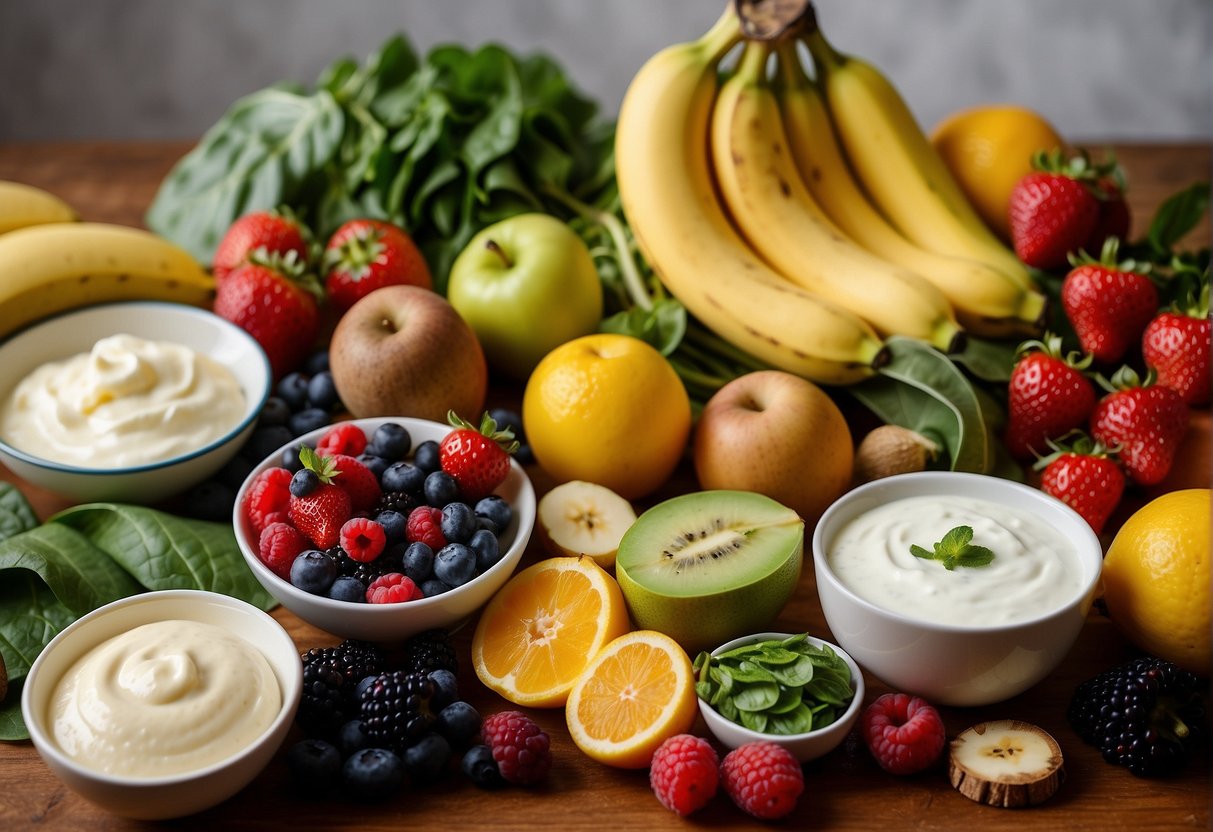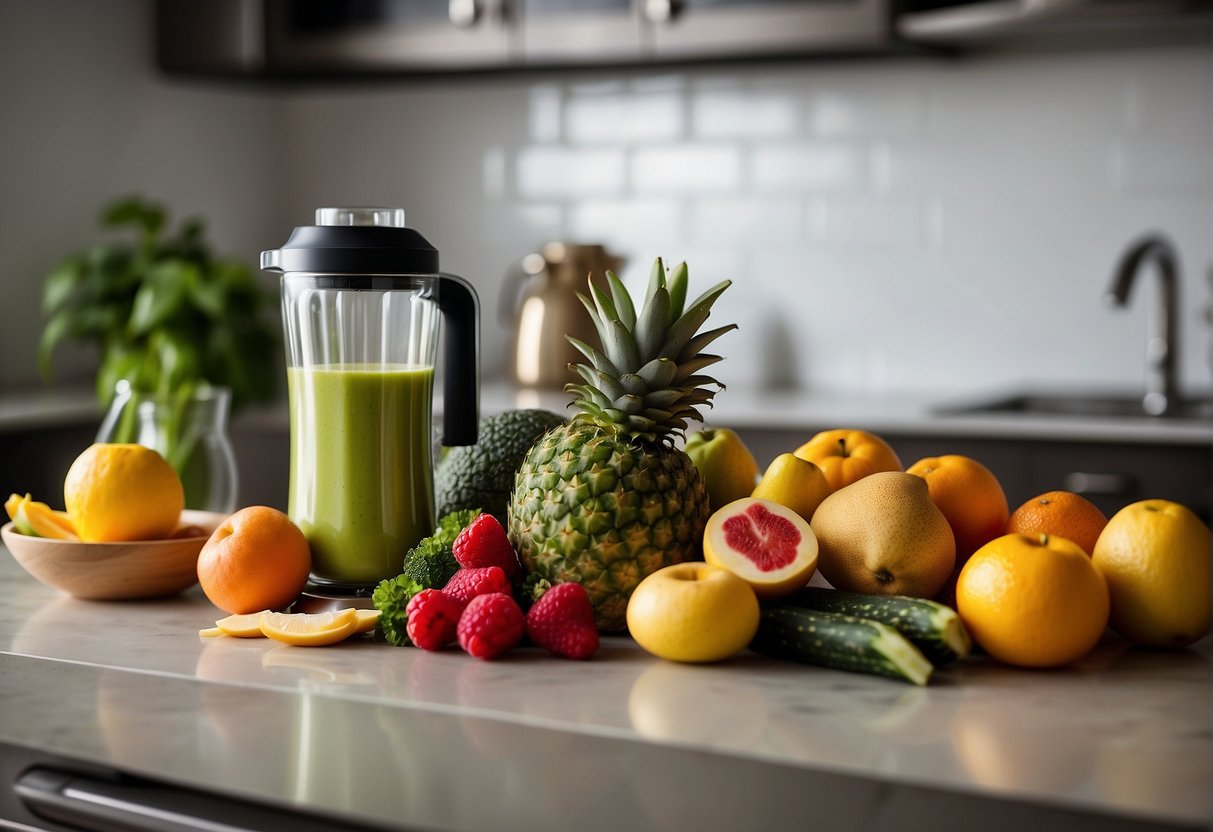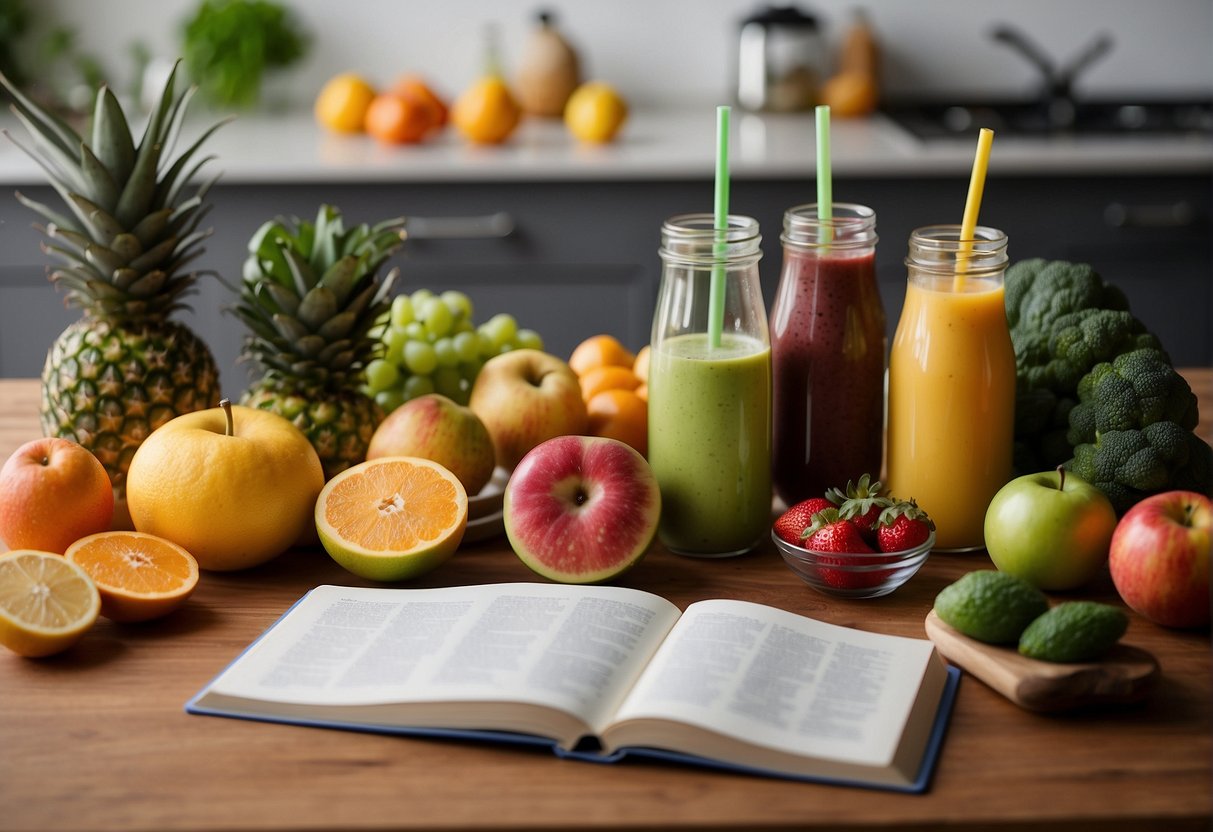Understanding First Trimester Nutrition
When I found out I was pregnant, like many others in their first trimester, my mind immediately went to nutrition. I learned that the first trimester is a whirlwind of new experiences and ensuring a nutrient-dense, balanced diet is super crucial for the little one’s development.
Nutrients are the building blocks within our diet that support growth, development, and overall health. Key vitamins and minerals are especially important. When I delved into what I needed most, here’s what I focused on:
- Folate: This super important B vitamin helps prevent neural tube defects, and I made sure to include folate-rich foods in my diet.
- Iron: Since our blood volume increases, I found that iron was super important to help avoid anemia and ensure that my baby gets enough oxygen.
- Calcium: Strong bones for me and baby? Yes, please! I packed my meals with calcium to assist with that.
- Vitamin C: Not only is it great for the immune system, but Vitamin C also helps me absorb iron effectively.
- Omega-3: These are critical for my baby’s brain development, so I didn’t skimp on omega-rich foods.
Protein intake was essential for cell growth and blood production, while fiber helped me stay clear of constipation (not the best side effect, if you ask me). I also focused on hydrating since fluids are super important for increasing blood volume.
- Protein: I aimed for about 70-100 grams per day.
- Fiber: 25-30 grams helped keep things moving along!
- Hydration: At least 2 liters of water a day was my goal.
I made sure my diet included plenty of antioxidants to protect both my body and my growing baby from damage, and a little bit of fat for energy. After all, creating life is hard work!
Remember, every pregnancy is unique, so consult a healthcare provider to tailor nutrition to specific needs.
Essential Smoothie Ingredients

When I mix up a smoothie, especially during the first trimester, I focus on blending a balance of flavors and nutrients. It’s all about picking the right fruits, veggies, proteins, and superfoods that support both my health and the baby’s development.
Fruit Essentials for Pregnancy Smoothies
I always start with a fruit base. Bananas are a must—they make the smoothie creamy and are packed with potassium. Then, I’d add mango for its sweetness and vitamin content. Berries, like strawberries and blueberries, add antioxidants and a vibrant color. And don’t forget avocados! They’re technically a fruit and throw in a good dose of healthy fats.
My go-to fruits:
- Banana – for creaminess and potassium.
- Mango – a sweet touch plus vitamins.
- Apple – for fiber and a subtle sweetness.
- Berries (strawberries, blueberries) – for antioxidants and color.
- Pineapple – for a tropical twist and vitamin C boost.
Greens and Vegetables
Next up, veggies. Kale and spinach sneak in without altering the taste much, but they’re nutritional powerhouses. High in fiber, vitamin A, C, and iron, they’re perfect for my growing needs.
Favorite greens:
- Kale – Iron and vitamins galore.
- Spinach – Easy to blend and so nutritious.
Proteins and Healthy Fats
Got to get that protein and healthy fats in. Greek yogurt or regular yogurt packs a punch of protein, and nut butters like peanut butter add a depth of flavor along with more protein and healthy fats. These ingredients help keep me full and nourished.
Protein picks:
- Greek yogurt – Thick, creamy, and high in protein.
- Nut butters (peanut butter, almond butter) – For a flavor kick and added protein and healthy fats.
Superfoods and Seeds
Lastly, I sprinkle in some superfoods. Chia seeds, flax seeds, or hemp seeds are my choices for that extra boost of omega-3 fatty acids and fiber. Just a tablespoon is enough to up the nutritional game of my smoothie without weighing it down.
Super add-ins:
- Chia seeds – For omega-3 and fiber.
- Flax seeds – A good source of lignans and fiber.
- Hemp seeds – For plant-based protein and omega-3s.
Navigating Common First Trimester Challenges with Smoothies
In my first trimester, I found that smoothies were a real game-changer for tackling the usual hurdles. They were simple to make, packed with nutrients, and really helped me manage those tricky early pregnancy symptoms.
Combating Morning Sickness
I realized ginger is a superhero when it comes to fighting morning sickness. I’d blend a small piece of fresh ginger right into my morning smoothie. The zing from the ginger worked wonders to reduce my nausea, and adding a bit of lemon not only enhanced the flavor but also contributed to the anti-nausea properties.
Managing Constipation
To keep things moving smoothly, I focused on adding plenty of fiber-rich ingredients to my smoothies. Ingredients like apples, pears, and spinach really bulked up the fiber content, which helped ease my constipation. Plus, a scoop of chia seeds added both fiber and omega-3s, which were great for me and the baby.
Ensuring Adequate Hydration
Staying hydrated was a priority for me, especially during my first trimester. I made sure my smoothies had a hydrating base, like coconut water or almond milk, which helped keep my fluid intake up. Sometimes I just wanted something super refreshing, so I added in cucumber or melon to provide that extra hydration boost.
Smoothie Recipes for the First Trimester
During the first trimester, I know that getting enough nutrients is crucial but not always easy, especially if you’re dealing with morning sickness. That’s why I’ve put together some tasty smoothie recipes that are both nourishing and gentle on the stomach:
- 1 ripe banana
- ½ cup strawberries
- ½ cup blueberries
- 1 cup spinach leaves
- 1 tbsp chia seeds
- 1 cup Greek yogurt
Blend until smooth for a berry-packed treat that’s high in fiber and protein.
Tropical Mango Medley
- 1 cup mango chunks
- ½ cup orange juice
- ½ banana
- 1 tbsp flax seeds
- ½ cup coconut milk
This mango-infused concoction delivers a dose of vitamin C and healthy fats.
- 1 cup kale leaves
- ½ cup apple slices
- 1 tbsp hemp seeds
- 1 cup almond milk
- A squirt of lemon juice
For a refreshing smoothie, mix these up until creamy, and you’ve got a green powerhouse.
Oatmeal Breakfast Smoothie
- ½ cup rolled oats
- ½ banana
- 1 tbsp almond butter
- 1 cup unsweetened almond milk
- Dash of cinnamon
An ideal morning smoothie that combines carbs, protein, and good fats.
I stick to ripe fruits for natural sweetness and like adding leafy greens for extra nutrients. Chia, hemp, and flax seeds are my go-tos for fiber and omega-3 fatty acids. And for that protein punch, Greek yogurt or a scoop of protein powder works wonders. With a blend like this, I can tackle my first trimester with tasty, nutrient-dense smoothies every day.
Additional Considerations for Safe Smoothie Consumption
While I’m eager to share some delicious smoothie recipes for the first trimester, it’s vital to focus on safety and adaptability. Here’s what I keep in mind to ensure my smoothies are not just tasty, but also safe and suitable for different dietary needs.
Understanding Food Safety During Pregnancy
Pregnancy means being extra cautious with what I eat and drink, as my immune system is somewhat suppressed. For me, food safety is paramount. I avoid using raw sprouts and unpasteurized juice in my smoothies, as they can harbor harmful bacteria. Also, I make sure that my fruits and veggies are thoroughly washed to remove any potential contaminants. I’ve learned that frozen fruit is a great option since it’s typically flash-frozen at peak ripeness, which helps minimize the risk of pathogens.
Customizing Smoothies for Dietary Restrictions
My friends have diverse dietary preferences and restrictions, and so might you. If someone is vegan, I swap out dairy products for plant-based milks like almond or soy. This keeps the smoothies dairy-free without sacrificing creaminess. For those concerned about sugar intake, natural sweeteners like ripe bananas or dates can be fantastic substitutes for added sugars, offering both flavor and nutrients. I also keep in mind that some might have specific dietary restrictions due to pregnancy-related conditions, making customization key.
Remember, when you’re expecting, it’s not just about satisfying cravings – it’s about keeping both you and your baby safe and healthy.
Beyond the First Trimester

After navigating the first trimester, it’s smart to adapt your smoothie game as your body and nutritional needs evolve throughout the rest of your pregnancy and into the postpartum period.
Smoothies for Ongoing Pregnancy
I find that keeping up with a variety of nutrient-dense smoothies is key during the remainder of pregnancy. For example, baby spinach is a great addition to green smoothies, as it’s packed with vitamins and easy to blend. Here’s how I like to structure my smoothie recipes:
- Base: A handful of baby spinach for iron and folate
- Fruits: Mixed berries for antioxidants and flavor
- Liquid: Almond milk or Greek yogurt for a creamy texture and calcium
- Add-ons: Chia seeds or a scoop of protein powder to sustain energy levels
These ingredients not only support my ongoing nutritional needs but also help combat fatigue as the pregnancy progresses.
Smoothies in the Postpartum Period
Once I’m in the postpartum period, my focus shifts slightly. Now, it’s all about finding smoothie recipes that support breastfeeding and recovery. Nutrient-dense superfoods take the front seat. Here’s a quick list of what I toss into the blender:
- Oats: They’re often considered helpful for milk production.
- Healthy fats: Like avocado, to support hormone health and provide lasting energy.
- Protein: A scoop of hemp or pea protein to help repair body tissue.
Remember that fatigue doesn’t just disappear once you’ve had the baby, so a well-balanced smoothie can be a real ally, providing me with a quick and nutritious meal that keeps me going.
Frequently Asked Questions

In navigating the first trimester, I’m often asked about the best ways to incorporate smoothies for both nutrition and symptom relief. Here are some of the specifics.
What kind of ingredients should I include in my first-trimester smoothie for optimal nutrition?
To pack your smoothie with nutrition, I recommend including a variety of fruits like berries and a source of healthy fats, such as avocado or chia seeds. Adding a handful of leafy greens like spinach provides essential vitamins and fiber.
Can smoothies help with morning sickness during the first trimester, and which ones are recommended?
Yes, smoothies can alleviate morning sickness. Ginger is a great addition for its anti-nausea properties. Consider a smoothie with ginger and some mild fruits like bananas or apples.
Are there any specific fruits or vegetables to avoid in smoothies during the early stages of pregnancy?
While most fruits and vegetables are safe, it’s best to avoid anything that could be contaminated or is high in mercury. Always wash produce thoroughly and steer clear of exotic imports that haven’t been tested for safety in pregnancy.
What are some quick and healthy smoothie recipes suitable for a pregnancy breakfast?
For a healthy breakfast smoothie, mix a banana with a cup of spinach, a few tablespoons of oats for fiber, your favorite milk, and a spoonful of peanut butter for protein and staying power.
How can I ensure that my homemade smoothies are safe and healthy during the first trimester?
To make sure your smoothies are safe, always use pasteurized juice or milk, and thoroughly clean all fruits, vegetables, and blending equipment. Avoid adding any unpasteurized products or raw eggs.
Is it safe to consume store-bought smoothies while expecting, and if so, which brands are best?
It is generally safe to enjoy store-bought smoothies if they use pasteurized ingredients and adhere to safety standards. However, I tend to make my own at home to control the ingredients and ensure maximum freshness and nutrition.

